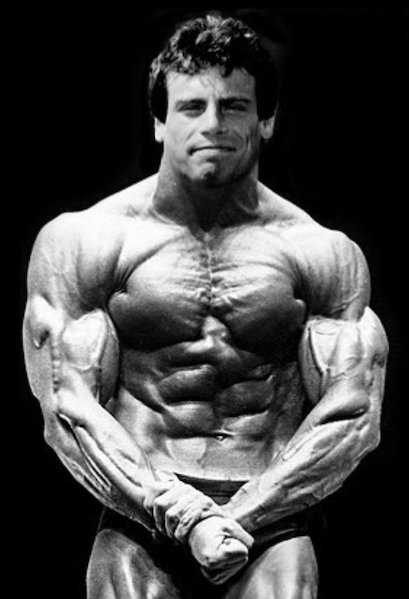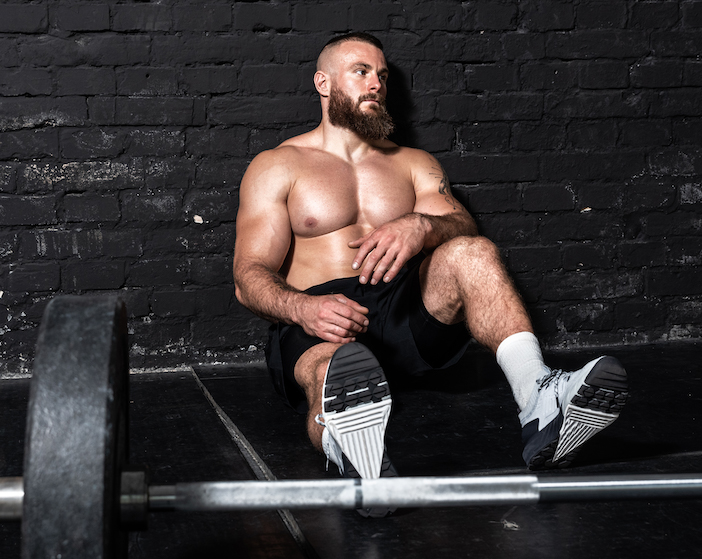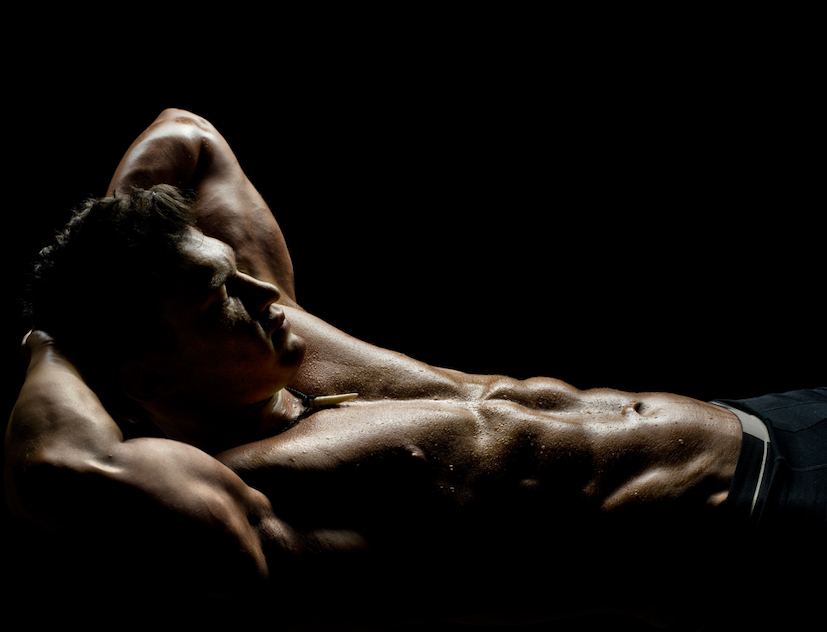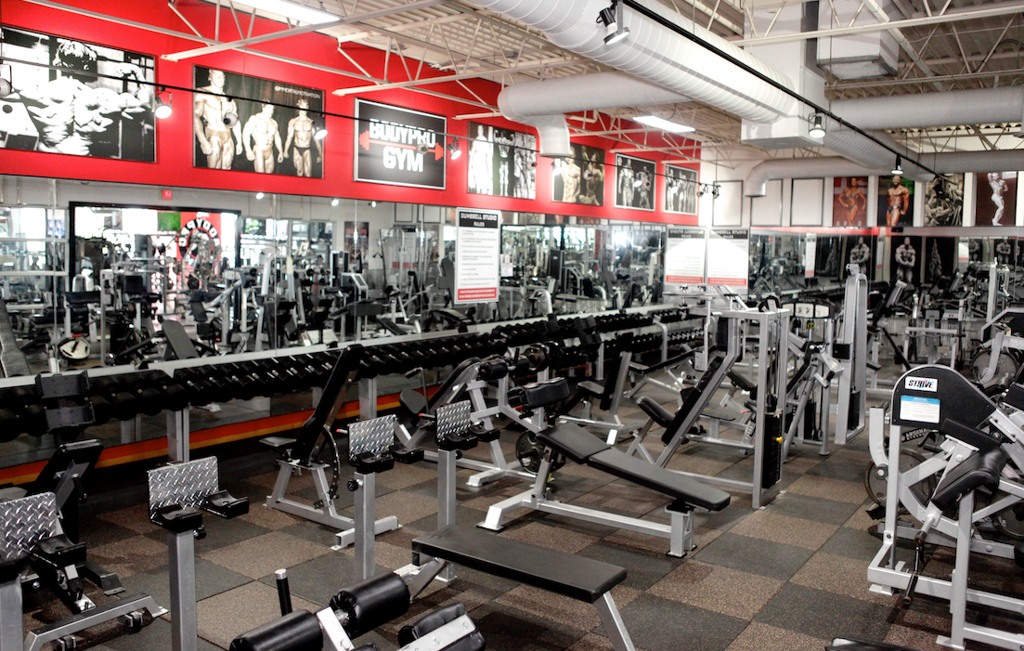John Robert Cardillo

John travelled the world to learn the best training and nutrition principles and trained alongside top pro bodybuilders at Gold's Gym California. He was a student of Arthur Jones, inventor of Nautilus and Medx Fitness machines, and the pioneer of hi-intensity training. John developed the HIT3 Training System, which transformed his physique to win countless bodybuilding competitions at just 18 years of age! He was also the first bodybuilder to utilize Faradic Electric Muscle Stimulation in his training and intermittent fasting during his competition prep. John’s SHREDDED Nutrition Diet helped him build one of the most shredded physiques of all time. His diet program incorporates fasting and nutrient timing to help athletes build lean muscle while losing body fat.

Using High-Intensity Training To Build Lean Muscle By John Robert Cardillo
The fundamental principle of exercise science is that weight training is anaerobic exercise, rather than aerobic exercise.
Anaerobic exercise is geared to the development of strength and muscular size by performing high intensity, short duration exercise. During anaerobic high intensity exercise physiological stress is quite high therefore working out more than 45 minutes per session, 3 times per week, is not possible. Anaerobic exercise is the opposite of aerobic exercise.
Aerobic exercise is geared exclusively to the development of endurance by low intensity, long duration activity. The goal of aerobic exercise is to increase endurance, which means the capacity to do more work for a longer period.
 For exercise to meet the requirements of hi-intensity it cannot be carried out for long periods of time. As it is impossible for a human being to be working at maximal capacity for more than short duration of time. If in fact a person is training for more than 45 minutes in a session, then it’s obvious that this is only possible do by performing lower intensity aerobic type exercise. It is only through high-intensity, short duration anaerobic exercise that hypertrophy, beyond normal size is achievable. The physiological stress of hi-intensity anaerobic exercise are infinitely greater on our neuromuscular system than the stress of lower intensity aerobic exercise, and therefore brief workouts have proven to be most productive. An individual in good physical condition can tolerate aerobic exercise for up to 90 minutes with a little stress and little distress. However, the same individual could never withstand 90 minutes of nonstop maximum hi-intensity sets of exercise performed to muscular failure. No one could tolerate that much hi-intensity stress.
For exercise to meet the requirements of hi-intensity it cannot be carried out for long periods of time. As it is impossible for a human being to be working at maximal capacity for more than short duration of time. If in fact a person is training for more than 45 minutes in a session, then it’s obvious that this is only possible do by performing lower intensity aerobic type exercise. It is only through high-intensity, short duration anaerobic exercise that hypertrophy, beyond normal size is achievable. The physiological stress of hi-intensity anaerobic exercise are infinitely greater on our neuromuscular system than the stress of lower intensity aerobic exercise, and therefore brief workouts have proven to be most productive. An individual in good physical condition can tolerate aerobic exercise for up to 90 minutes with a little stress and little distress. However, the same individual could never withstand 90 minutes of nonstop maximum hi-intensity sets of exercise performed to muscular failure. No one could tolerate that much hi-intensity stress.
What Is High-Intensity Training?
 High-intensity anaerobic exercise is the imposition of the highest stimulus on a particular muscle, in the shortest period of time, until total muscular failure is reached.
High-intensity anaerobic exercise is the imposition of the highest stimulus on a particular muscle, in the shortest period of time, until total muscular failure is reached.
For an exercise to stimulate hypertrophy it must recruit the greatest percentage of muscle fibres to maximally contract. This can only be accomplished by using sufficient resistance as a stimulus to cause a particular muscle extreme distress. Anything less than this type of hi-intensity work will not stimulate optimal hypertrophy.
To train with the greatest amount of intensity the following principles must be adhered to:
- The exercise must be performed in the strictest form in order to place the greatest stress on the muscle being exercised.
- Maximum resistance must be used to allow at least 8 repetitions to be performed.
- Because 8 repetitions were performed in the previous workout, then the goal of this workout is to surpass 8 repetitions and perform at least 9 or more repetitions, until positive failure is reached.
- Perform 3 to 4 negative (10 second drop) repetitions to failure at the end of the set.
- After 10 second negative repetitions are no longer possible, finish each set with several static repetitions to failure.
- Move from the first exercise for the body part being exercised, to the second exercise with zero rest.
- Always perform isolation exercise first for a body part. Followed by a compound exercise movement to thoroughly stimulate the particular muscle being exercised.
- Using exercises that specifically target the muscle to biomechanically contract first by an isolation exercise, followed immediately by a different exercise that causes the muscle to contract from an apposing angle such as a compound exercise. In a small body part (such as biceps) 2 such exercises are required for maximal growth.
How Many Sets per Exercise?
 ONE SET per exercise:
ONE SET per exercise:
You must use a weight that is heavy enough to allow you to perform 8 strict repetitions, within your strength ability. Then through sheer determination/motivation you must push yourself to perform several more repetitions and attempt to complete a total of 10-or more. Employing the principles outlined above.
One would naturally ask, “wouldn’t resting a few minutes and doing a second set or more sets of the same exercise be more beneficial?” The answer is “NO”. Resting for even 10 seconds would allow the muscle fibers used in the first set to recuperate and by doing a second set you would be in essence injuring the already stimulated myofibrils, causing overtraining. As an example: if you were out in the sun for a period of time and got a severe sunburn, the worst thing you could do would be to rest for a half hour,(out of the sun) and then go back in the hot sun to burn some more. The stimulus of the suns rays could cause serious 2nd degree burn. However, had you not gone in the sun again that day and stayed out of the sun for the next 72-96 hours, your skin would have time to recuperate and start forming a tan, as a response to protect itself from more sun stimulation
How Many Exercises per Body Part?
 The size of a particular body part and it’s biomechanical attachments dictate the number of sets required to fully stimulate the muscle fibres for growth. As an example, the large quadriceps muscles can be stimulated from 3 positions. The first is a direct isolation movement, on a leg extension machine. The second is a compound movement on a 45 degree leg press machine. The third is the back squat, a compound movement which brings into play strong auxiliary muscles, namely glutes, and spinal erectors. The logic for starting with the leg extension, followed by the 45 degree leg press, is to thoroughly pre-exhaust the quadriceps before doing squats. This is because, had we started with squats first, the lower lumbar and glutes would have failed (reached painful exhaustion) before the stronger quadriceps muscles. Therefore, the set of squats would have had to be terminated before the quadriceps were thoroughly stimulated and reached muscular failure. By doing squats last, having pushed the quadriceps to momentary muscular failure by doing the first 2 exercises, performing squats hits the quadriceps harder because of the fresher auxiliary muscles.
The size of a particular body part and it’s biomechanical attachments dictate the number of sets required to fully stimulate the muscle fibres for growth. As an example, the large quadriceps muscles can be stimulated from 3 positions. The first is a direct isolation movement, on a leg extension machine. The second is a compound movement on a 45 degree leg press machine. The third is the back squat, a compound movement which brings into play strong auxiliary muscles, namely glutes, and spinal erectors. The logic for starting with the leg extension, followed by the 45 degree leg press, is to thoroughly pre-exhaust the quadriceps before doing squats. This is because, had we started with squats first, the lower lumbar and glutes would have failed (reached painful exhaustion) before the stronger quadriceps muscles. Therefore, the set of squats would have had to be terminated before the quadriceps were thoroughly stimulated and reached muscular failure. By doing squats last, having pushed the quadriceps to momentary muscular failure by doing the first 2 exercises, performing squats hits the quadriceps harder because of the fresher auxiliary muscles.
Smaller body parts such as biceps or calves can be worked from 2 or 3 angles, performing 2 or 3 sets in total, to stimulate the greatest amount of growth.
Time as a Factor
 When working a specific body part, the rest time between exercises determines the level of intensity and degree of hypertrophy achieved. To train with the highest intensity that I advocate in my HIT3 workout system, no rest is permitted between exercises. Only the time needed to move to the next exercise. Taking more than this minimal time causes the muscle to recuperate and maximum muscle fibre recruitment is hindered, leading to overtraining the muscle fibres that were stimulated in the previous set. Therefore a particular body part must be worked from start to finish without any rest. Rest of one to two minutes is permitted after completing a body part and moving on to the next body part.
When working a specific body part, the rest time between exercises determines the level of intensity and degree of hypertrophy achieved. To train with the highest intensity that I advocate in my HIT3 workout system, no rest is permitted between exercises. Only the time needed to move to the next exercise. Taking more than this minimal time causes the muscle to recuperate and maximum muscle fibre recruitment is hindered, leading to overtraining the muscle fibres that were stimulated in the previous set. Therefore a particular body part must be worked from start to finish without any rest. Rest of one to two minutes is permitted after completing a body part and moving on to the next body part.
Time Under Tension
To create the greatest amount of intensity of effort, we must also consider the amount of time that the specific muscle is under tension during the performance of the exercise. Essentially what we are trying to accomplish during high intensity exercise is to provide the most tension possible for a muscle we are training for as long as possible. Using maximal resistance and employing all of the prerequisites of my HIT3 principles, a muscle would be under extreme tension during the time it was being exercised. Typically to perform 10 repetitions it would take 15 to 20 seconds. However, using my HIT3 principles, you would take 2 to 3 seconds to perform the positive part of the exercise and 3 to 4 seconds performing the negative part. Therefore a total of 5 to 7 seconds per repetition are required. In a set of 10 repetitions, the body part being worked would be under tension for more than a minute. Intensity is further enhanced by moving from one exercise to the next without any rest. In total, a large muscle such as quadriceps will receive adequate stimulus by the performance of 3 exercises and keeping the quadriceps under pressure for as little as 4 to 5 minutes.
Two Types of Overtraining
 The first type of overtraining that most bodybuilders fall into is performing too many light sets for a particular body part. Which they call volume training. They erroneously believe that more sets for a body part are better than less sets. To perform high volume of exercise, one can only logically conclude that this is possible because they are not exercising with maximum intensity. Therefore, they are overtraining the same muscle fibres l, which will hinder growth.
The first type of overtraining that most bodybuilders fall into is performing too many light sets for a particular body part. Which they call volume training. They erroneously believe that more sets for a body part are better than less sets. To perform high volume of exercise, one can only logically conclude that this is possible because they are not exercising with maximum intensity. Therefore, they are overtraining the same muscle fibres l, which will hinder growth.
The second form of overtraining is training too many days straight and not allowing the central nervous system, (which is responsible for neuromuscular contractions) enough time to recuperate. For example, legs trained properly, require at least 7 days total rest between workouts.
My HIT3 workout ideology never allows upper body parts to be trained over 2 consecutive days, or hamstrings to be trained separate from quadriceps in the same week. Therefore I advocate that chest, delts, triceps and abs, are trained on Monday’s, rest on Tuesday. Lower lumbar, glutes, hamstrings, quads, and calves are trained on Wednesday, rest of Thursday. On Friday, lats, rear delts, traps, biceps and forearms are trained. This allows for sufficient rest time between body parts to ensure full neuromuscular recuperation and avoid overtraining.
Does “The Pump” Cause Muscle Growth?
 Many bodybuilders are under the false impression that the pump they achieve through volume training equates to muscle growth. If this was the case, marathon runners, who achieve a good pump from their daily 15 to 25 kilometre runs would have larger muscles than 100 yard sprinters. Yet the opposite is true. Muscle pumping with medium heavy weights causes fluid build up in the particular body part being exercised. However great the pump looks and feels, it does not lead to new muscular growth. Hi-Intensity training causes lactic acid buildup in a muscle resulting in a burning pain. Training through the pain threshold causes more growth stimulation. Although a lesser pump will be experienced by hi-intensity training (than that experienced by volume training), more muscle growth will occur.
Many bodybuilders are under the false impression that the pump they achieve through volume training equates to muscle growth. If this was the case, marathon runners, who achieve a good pump from their daily 15 to 25 kilometre runs would have larger muscles than 100 yard sprinters. Yet the opposite is true. Muscle pumping with medium heavy weights causes fluid build up in the particular body part being exercised. However great the pump looks and feels, it does not lead to new muscular growth. Hi-Intensity training causes lactic acid buildup in a muscle resulting in a burning pain. Training through the pain threshold causes more growth stimulation. Although a lesser pump will be experienced by hi-intensity training (than that experienced by volume training), more muscle growth will occur.
Recuperation - Growth Days
 Intense sun exposure is the stimulus that causes sunburn which results in a suntan, likewise hi-intensity training is the stimulus that causes muscle soreness which results in muscular growth. In the case of a sunburn, it takes several days of total rest away from the sun to allow the skin to recuperate and heal. As is the case after a hi-intensity workout session. Total rest and recuperation is the only way to ensure that the worked muscles have a chance to grow. The reward of hi-intensity training are “growth days”.
Intense sun exposure is the stimulus that causes sunburn which results in a suntan, likewise hi-intensity training is the stimulus that causes muscle soreness which results in muscular growth. In the case of a sunburn, it takes several days of total rest away from the sun to allow the skin to recuperate and heal. As is the case after a hi-intensity workout session. Total rest and recuperation is the only way to ensure that the worked muscles have a chance to grow. The reward of hi-intensity training are “growth days”.
Exercise Adaptation
Our bodies have a built-in survival mechanism that causes us to become very resilient against stress. No different than the stress caused by hi-intensity exercise. Our body is always trying to adapt to the stress imposed on it. Therefore, in order to continue to make muscular and strength gains we must always be imposing new stress challenges on our body. This can obviously be accomplished by increasing the resistance we use in our exercises, forcing the muscles to work harder every workout. However even this stress producing methodology will stop working and you will feel that you are getting stale because you are no longer getting any stronger nor are you gaining more muscle size. Adaptation is the reason for this. This will typically occur every 10 to 12 weeks at which point you must take a break of at least one week from training to recharge the batteries. Once you get back to training, I recommend a change of at least 1/3 of the exercises in the workout routine.
The Significance of Muscle Soreness
 Properly stimulated muscles will experience deep soreness within 24 to 48 hours after the workout. The soreness should last for 5 to 7 days. The significance of this soreness is that muscular growth has been stimulated and the muscle is now repairing itself. Muscle Growth is now taking place, therefore the repair process must not be interfered with by training the muscle before it is fully recovered. A common mistake made by most bodybuilders today is to train the body part again before it’s completely recuperated. This of course leads to muscle atrophy, and not hypertrophy.
Properly stimulated muscles will experience deep soreness within 24 to 48 hours after the workout. The soreness should last for 5 to 7 days. The significance of this soreness is that muscular growth has been stimulated and the muscle is now repairing itself. Muscle Growth is now taking place, therefore the repair process must not be interfered with by training the muscle before it is fully recovered. A common mistake made by most bodybuilders today is to train the body part again before it’s completely recuperated. This of course leads to muscle atrophy, and not hypertrophy.
Machines vs Free Weights
 There has been a long-standing debate on which is a better exercise tool, machines or free weights. They obviously both provide stimulus to muscles being exercised. Some machines have been designed to provide better resistance throughout their range of motion, while others may provide too much resistance at the starting point of the exercise and less at the contracted position. Each piece of modern exercise machine has its good points and not so good points.
There has been a long-standing debate on which is a better exercise tool, machines or free weights. They obviously both provide stimulus to muscles being exercised. Some machines have been designed to provide better resistance throughout their range of motion, while others may provide too much resistance at the starting point of the exercise and less at the contracted position. Each piece of modern exercise machine has its good points and not so good points.
My conclusion is that both are effective at different times to provide the stimulus required for a hi-intensity workout. What is important to consider is that our body’s neuromuscular pathways adapt very quickly to various forms of exercise stimulus. Therefore, I advocate in my HIT3 workout system that both are to be used in combination and of course switching some exercises from machines to free weights (or free weights to machines) every 10 to 12 week training cycle. Of importance is that the principles of Hi-Intensity training are always adhered to!
For more articles on fitness, bodybuilding and health, click below:
- https://www.dailyscanner.com/john-cardillo-champion-bodybuilder-and-transformation-mastery-expert/
-
https://bestinau.com.au/john-cardillo-entrepreneur-and-transformation-mastery-expert/
-
https://healthnewstribune.com/anti-aging-and-prolonging-life-by-john-robert-cardillo/
Want to Train and Diet Like a Bodybuilder? Check Out Canada's Premier Fitness Expert John Cardillo or Right Here.

